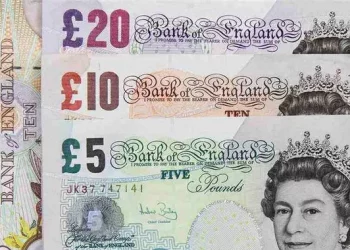The Australian Dollar (AUD) recovered from early losses during Thursday’s European trading session, pushing the AUD/USD pair slightly higher as the US Dollar (USD) pulled back from recent gains. However, the pair faced resistance following a US federal court ruling that blocked President Donald Trump’s “Liberation Day” tariffs, with the court ruling that the president lacked authority to impose broad tariffs on imports from countries with trade surpluses against the US.
Meanwhile, the Trump administration has restricted exports of jet engines, semiconductors, and select chemicals to China, reportedly in retaliation for Beijing’s limits on critical mineral exports to the US. Given Australia’s strong trade ties with China, shifts in Chinese market conditions may affect the AUD’s trajectory.
Looking ahead, the Australian Dollar may encounter further headwinds as the Reserve Bank of Australia (RBA) signals readiness for additional interest rate cuts amid progress in inflation control and growing concerns over US-China trade frictions. RBA Governor Michele Bullock emphasized the bank’s willingness to act should economic conditions worsen, raising the prospect of looser monetary policy.
On the US front, the US Dollar Index (DXY) climbed over 0.5% to 100.40, as investors await key economic releases including Q1 GDP, Personal Consumption Expenditures prices, and Initial Jobless Claims. The Federal Reserve’s latest meeting minutes revealed a consensus among policymakers to maintain a cautious stance on rate changes amid economic uncertainties.
Fiscal challenges loom as President Trump’s “One Big Beautiful Bill” risks expanding the US deficit by $3.8 billion, potentially keeping bond yields elevated and borrowing costs high. Senator Ron Johnson voiced opposition, calling for serious spending cuts amid soaring deficits projected at $2.2 trillion annually. Moody’s downgraded the US credit rating to Aa1, citing rising debt burdens expected to reach 134% of GDP by 2035.
Risk sentiment improved as US-EU trade tensions eased, with Trump extending the EU tariff deadline to July 9. In China, industrial profits rose 3% year-over-year in April, signaling positive momentum after earlier gains. However, Australia’s private capital expenditure fell 0.1% in Q1, below expectations, while inflation for consumer goods steadied at 2.4% year-over-year, slightly above forecasts.
Technically, AUD/USD traded near 0.6410 with a weakened bullish bias, having slipped below its ascending channel and nine-day EMA at 0.6437. The pair faces immediate resistance at this EMA and a six-month high at 0.6537, with a breach potentially supporting a move toward the channel’s upper boundary near 0.6640. Support lies at the 50-day EMA of 0.6382, and a break below could expose the pair to further declines toward the March 2020 low of 0.5914.
Related Topics:
























